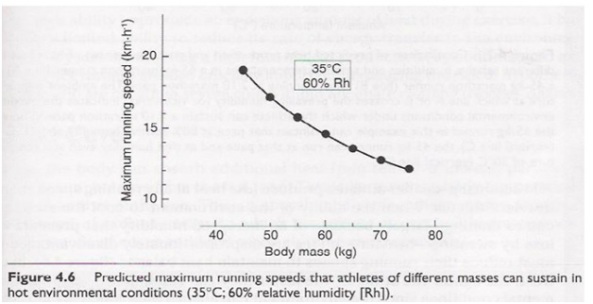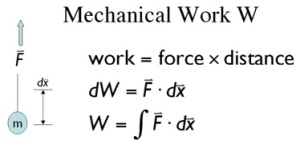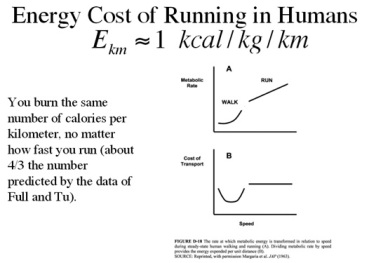“I often say that when you can measure what you are speaking about, and express it in numbers, you know something about it.”
Lord Kelvin
I have always been curious about the world and how things work. Perhaps that’s why my favorite subject in school was physics. I still like to go to Barnes & Noble and the local library to rummage for books about physics. One particular area of physics that has always fascinated me is mechanics. Mechanics is the branch of physics that deals with motion and forces. Whenever I go out for a run, I think of how my interest in physics could possibly help me find the solutions to some of the questions I’ve been asking myself.
I want to know how weight loss and running distance are related to each other. How long should I run just to lose one pound of weight? What is the furthest distance I could run in 30 minutes? How would my time change if instead of pavement, I ran on track, sand, grass, or on the treadmill? What difference does the weather really make when I am running outside?
I also wonder about my health. How badly am I damaging my knees when I run? What difference do my Saucony Kinvara shoes really make over the Asics Gel Shoes when it comes to protecting my knees from the stress of hitting the ground? What is the best posture for running and how should I land on my feet? What’s my ideal maximum heart rate while running?
Finally, I question my performance. What’s the fastest time I could possibly run a distance such as a mile or a 5K? What kind of training do I need to do in order to get to that level? How long would it take me?
As a helpful resource, I found the following power point presentation on running and physics by Jim Reardon, University of Wisconsin.
“Overview of Physics of Running”: http://uw.physics.wisc.edu/~reardon/Physics%20of%20Running.pdf
The first thing that I noticed from the presentation was the above equation. The most interesting part of solving the equation would be calculating the Force factor. We may recall that Force equals force times acceleration or F=ma, where m is mass of an object and a is the acceleration of the center of mass of the object. When running, some contributing forces include gravity and friction of the surface, which comprise the net force on the body in the above equation. Another way we can rewrite the above equation is Distance = Work/Force. Let’s assume that our net force factor is reduced as a result of switching to a smoother surface from pavement to track. After all, we will have a smaller friction coefficient if we change to a smoother surface. Keeping the amount of Work we performed constant, we can see that Distance will increase by the same multiple by which we reduced the Force factor. On the other hand, the Net Force will increase if we switch to a rougher surface like sand. Keeping the Work factor constant, Distance would decrease proportionately.
The above graph demonstrates that as body mass increases, the maximum speed for a runner consistently drops assuming 60% relative humidity and outside temperature of 35 degrees C, which equates to 95 degrees F. According to the graph, a runner weighing 45 kg (100 lb) can run at a max pace of 20 km/hr (12 miles/hr). This is a reasonable assumption since elite athletes today are able to run a 10K (6.2 miles) in well under 30 minutes. It’s astonishing that if the runner’s body mass increases to 80 kg (176 lb), the same runner ‘s maximum running speed would drop all the way down to 12 km/hr (7 miles/hr)!
Reardon’s explanation behind this phenomenon brings us back to our Work equation of W = FxD. The fact is that people sweat in order to stay cool. This occurs in running as body temperature naturally increases. Therefore, sweat naturally involves heat loss. However, heat loss depends on surface area. Larger runners with more mass have more surface area, so it literally takes them more work to sweat in order to stay cool. As a result, Reardon concludes that “smaller runners do better in extreme heat than larger runners.”
Another interesting fact I learned is that people burn the same amount of calories over the same distance traveled. It doesn’t matter how fast you walk or run. You still burn the same amount of calories. The only difference is that it will take you less time to burn the same amount of calories if you run instead of walk since you are traveling faster.
Finally, Reardon’s presentation confirmed what Gordon Pirie wrote all along about cadence and heel strikes. Heel strikers use up more energy than toe strikers. Reardon quoted a study done on robots by S. Collins to illustrate this fact (Anthropoid Passive-Dynamic Walking Robots S. Collins et al., 2001). Using the same study as support, Reardon also added that runners should take shorter, but more frequent steps. This advice is consistent with a cadence of three steps per second that many running coaches recommend. Also, longer strides result in more “up and down”/bobbing motion of our heads. As we run, our heads bounce up and down, which also makes it almost impossible to read a magazine on a treadmill. By keeping our head straight and taking shorter strides, we are conserving our energy, which allows us to run faster and longer.
Miles From Last Week
Sunday: 5 miles
Monday: 3.1 miles
Tuesday 6.2 miles
Wednesday: 3.1 miles
Thursday: 3.1 miles
Friday: 3.1 miles
Saturday: 5 miles
Total: 28.6 miles
Miles Ran in May: 87.5 (Personal Record)
Miles Ran in April: 76.3
Ideas for Future Posts
Time for Cross-Training
Running in Parque Central
Time for New Shoes
Running Rhymes
Running in Different Cultures
Best Running Movie Scenes Ever
How Running relates to Other Sports
Let’s Stretch
What do I think about while I’m running?
How I Started Running
Old School vs. New School Runners



Pingback: Eating Healthy To Stay Fit | My Road To Staying Fit